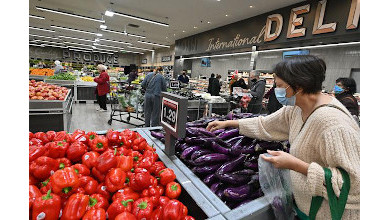U.S. consumer spending increased solidly in October, while inflation moderated, giving the economy a powerful boost at the start of the fourth quarter as it navigates a high interest rate environment.
Consumer spending, which accounts for more than two-thirds of U.S. economic activity, jumped 0.8% after an unrevised 0.6% increase in September, the Commerce Department said on Thursday. October’s gain was in line with economists’ expectations.
Spending last month was boosted by wage gains amid labor market resilience, one-time tax refunds in California, which saw some households receiving as much as $1,050 in stimulus checks, and cost of living adjustments for food stamp recipients.
The Federal Reserve is in the midst of what has become the fastest rate-hiking cycle since the 1980s, as it battles high inflation, raising the risks of a recession next year. Fed Chair Jerome Powell said on Wednesday the U.S. central bank could scale back the pace of its rate increases “as soon as December.”
That intention was supported by a moderation in the inflation trend last month. The personal consumption expenditures (PCE) price index rose 0.3% after advancing by the same margin in September. In the 12 months through October, the PCE price index increased 6% after advancing 6.3% in September.
Excluding the volatile food and energy components, the PCE price index rose 0.2% after gaining 0.5% in September. The so-called core PCE price index climbed 5% on a year-on-year basis in October after increasing 5.2% in September.
The Fed tracks the PCE price indexes for its 2% inflation target. Other inflation measures have shown signs of slowing. The annual consumer price index increased less than 8% in October for the first time in eight months.
The Fed has raised its policy rate by 375 basis points this year from near zero to a 3.75%-4% range.
Click here to read the full report from Reuters via Yahoo Finance.
